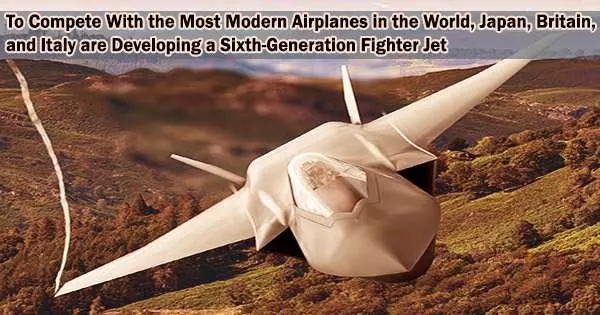Britain, Japan, and Italy declared on Friday (December 9, 2022) that they are working together to develop a sixth-generation fighter jet that will compete with or surpass the greatest jets currently used by countries like China and Russia and perhaps even the United States, the trio’s biggest ally.
“We are announcing the Global Combat Air Program (GCAP) an ambitious endeavour to develop a next-generation fighter aircraft by 2035,” British, Japanese and Italian leaders said in a joint statement.
The new fighter plane is required because “threats and aggression are escalating” against the “rules-based, free and open international order,” according to the leaders’ statement, which did not specifically reference China or Russia.
“Defending our democracy, economy and security, and protecting regional stability, are ever more important,” the leaders said.
The British government stated in a separate statement that work on the new warplane is anticipated to start in 2024 and conclude by 2035.
It will showcase technologies from each of the three partners, the British statement said.
“The ambition is for this to be a next-generation jet enhanced by a network of capabilities such as uncrewed aircraft, advanced sensors, cutting-edge weapons and innovative data systems,” it added.
The new jet is seen as a replacement for Britain’s Typhoon fighters and Japan’s F-2s.
The new program will see Britain, Japan and Italy going their own way without the assistance of the US, the world’s preeminent warplane maker.
The US Fifth Generation F-35 Stealth Fighter Program involves all three nations, and as a result, all three fly the F-35, with variants of the aircraft being built in Italy and Japan. The new jet is not expected to affect the F-35 program.
US backs allies’ plan
In a joint statement with the Japanese Defense Ministry, the Pentagon backed the development of the new warplane.
“The United States supports Japan’s security and defense cooperation with likeminded allies and partners, including with the United Kingdom and Italy two close partners of both of our countries on the development of its next fighter aircraft,” the US-Japan statement said.
The new jet would be made to work with all of their partners’ and allies’ defense plans, according to the UK-Japan-Italy statement.
“Future interoperability with the United States, with NATO and with our partners across Europe, the Indo-Pacific and globally is reflected in the name we have chosen for our program. This concept will be at the center of its development,” it said.
The leaders said the GCAP program “will support the sovereign capability of all three countries to design, deliver and upgrade cutting-edge combat air capabilities.”
Critics claim that the ability of users of aircraft like the F-35 to customize them to meet their unique requirements has occasionally been constrained by the US’s severe export regulations on military technology.
The US also has a sixth-generation fighter jet known as the Next-Generation Air Dominance (NGAD) program in the works. It is designed to be the successor to its F-22, which along with the F-35, is considered the world’s top fighter jet.
The NGAD program has similar aims to the joint UK-Japan-Italy plan.
“The Air Force intends for NGAD to replace the F-22 fighter jet beginning in 2030, possibly including a combination of crewed and uncrewed aircraft,” a US Congressional Research document says.
But as of now the US is pursuing the NGAD program alone.
Shared economic interests
The British, Japanese and Italian leaders highlighted the benefits of working together.
“It will deepen our defense cooperation, science and technology collaboration, integrated supply chains, and further strengthen our defense industrial base,” their joint statement said.
The program is also expected to provide an economic boost.
“This program will deliver wider economic and industrial benefits, supporting jobs and livelihoods across Japan, Italy and the UK,” the statement said.
The new warplane program, according to a 2021 analysis by PricewaterhouseCoopers, may support roughly 21,000 jobs annually by 2050 and deliver an estimated $32.1 billion (£26.2 billion) to the economy, according to the British statement.
Meanwhile, China and Russia are also thought to be pursuing sixth-generation aircraft.
China and Russia now fly fifth-generation fighters Beijing’s J-20 and J-31 jets and Moscow’s Su-57.
But the US-designed F-35s are widely seen as equal to or better than the Chinese or Russian aircraft.
















